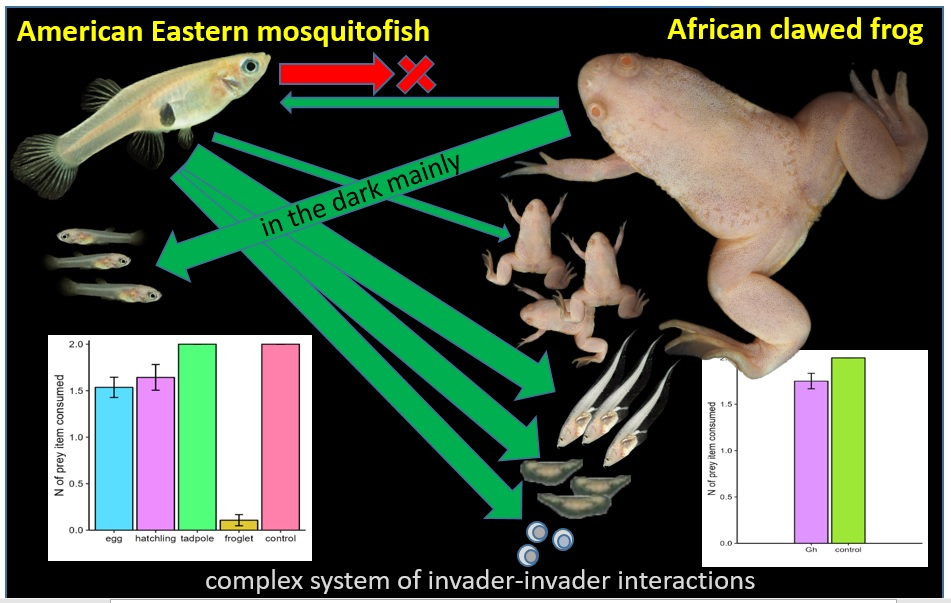
We live in an era when animal and plant species are rapidly spreading beyond their native ranges due to human activity. Species that have conquered new territories are called “alien species” or "invaders". Today, some species can be found almost worldwide, making their distribution "global." These species are referred to as "global invaders." Such species include the Eastern mosquitofish (Gambusia holbrooki), which was historically actively distributed around the world to control mosquito larvae, and the African clawed frog (Xenopus laevis), which is widely used in medicine and scientific laboratories. These animals were introduced to water bodies in regions where they had never existed before, and if the climate permited, they reproduced, spreading to neighboring water bodies, and harming native animal species. Both the mosquitofish and the clawed frog are voracious predators capable of eating almost any small animal, including invertebrates and small vertebrates such as tadpoles and fish. However, what will happen if these two global invaders, the mosquitofish and the clawed frog, meet in the same water body?
Scientists from the A.N. Severtsov Institute of Ecology and Evolution of the Russian Academy of Sciences conducted a series of specialized laboratory experiments. The researchers assessed the vulnerability of different life stages of the clawed frog (eggs, hatchlings, tadpoles, newly-metamorphosed froglets, and adults) to predation by the mosquitofish, and also tested whether adult clawed frogs prey upon juvenile and adult mosquitofish. The results confirm differences in the palatability of different ontogenetic stages of the clawed frog to the mosquitofish, as well as the low palatability of mosquitofish for adult frogs, with the exception of mosquitofish juveniles, which are relatively protected in well-lit conditions (during the day) but highly vulnerable under low-light conditions (at night). Thus, these behavioral interactions are complex and can be defined as "asymmetrical bidirectional predation": the mosquitofish readily eliminates its opponent at early developmental stages (eggs, hatchlings, tadpoles, metamorphs), but under certain conditions, it may itself become prey for adult frogs. The discovery of a vulnerable stage in the mosquitofish makes it impossible to definitively state that this fish will suppress clawed frog populations when the two invaders meet in new regions of the planet. In any case, mosquitofish are likely to dominate in urban water bodies with artificial lighting.
The practical significance of this study is that we have taken another step toward understanding what nature around us, including the species composition of ponds and lakes, will look like as a result of irreversible global changes driven by human activity.
The results of the study were published in an international journal NeoBiota (Q1; JCR IF 3.1): Reshetnikov A.N., Raldugina A.O., Grinchenko D.V., Kidov A.A., Platonov N.G., Petrovskiy A.B., 2025. Predatory interactions between two global aquatic invaders beyond their native ranges: An experimental approach. NeoBiota 102: 173–189. DOI: 10.3897/neobiota.102.145644
